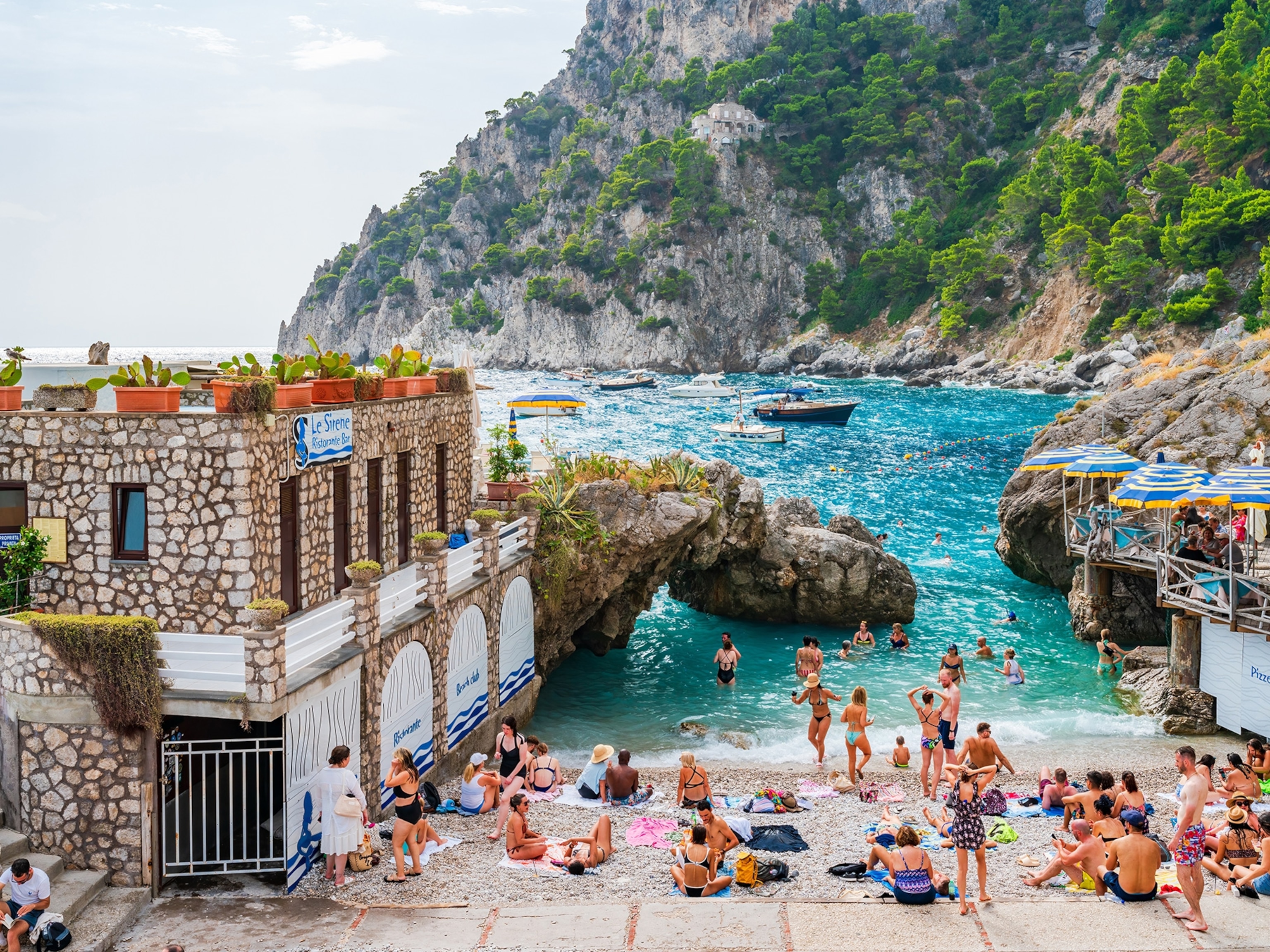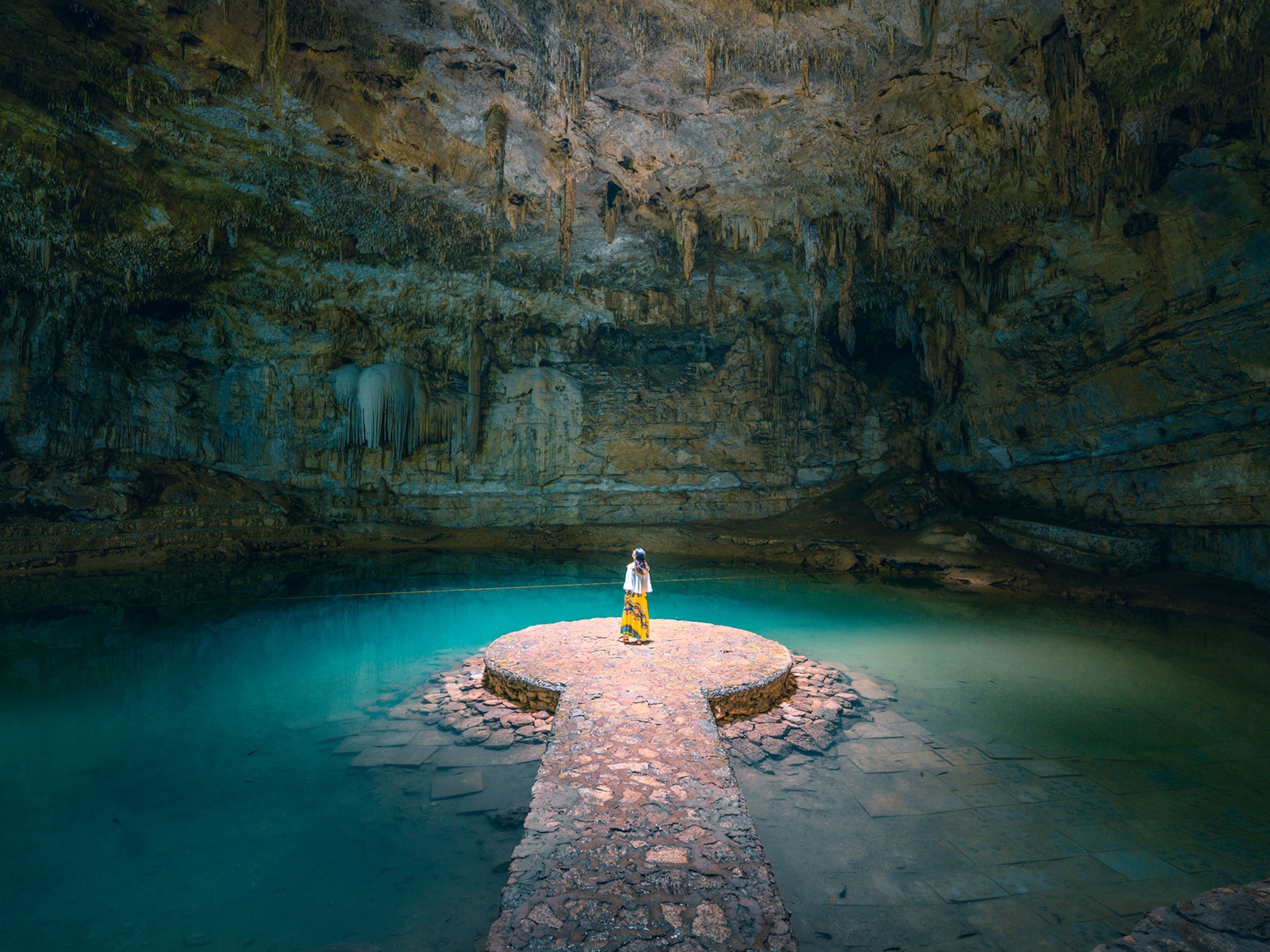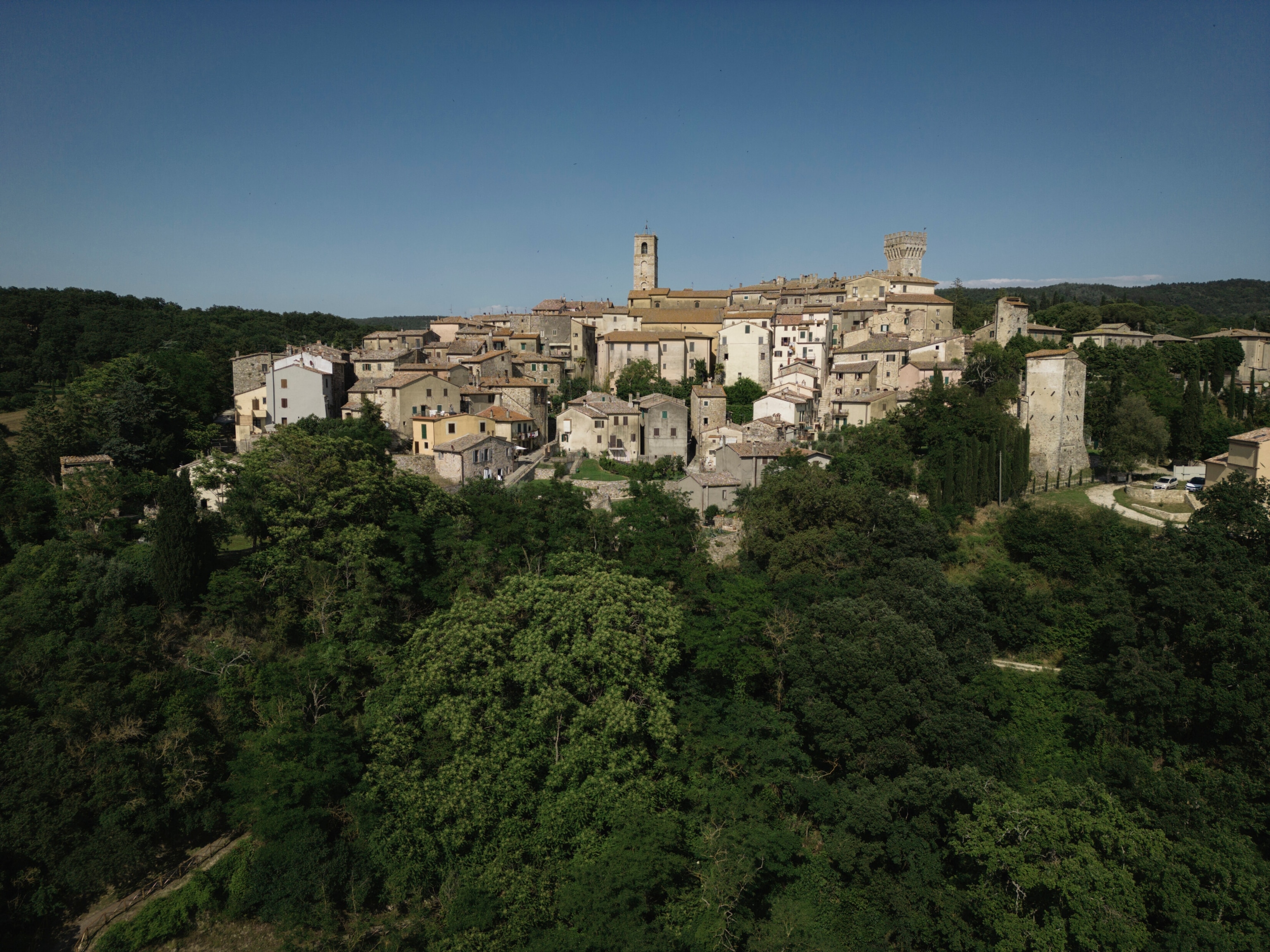
This Tuscan spa town offers ancient history and healing waters
The remarkable archaeological site proves that San Casciano dei Bagni has been a place of wellness since Etruscan times.
The walled town of San Casciano delivers storybook Tuscany—narrow pedestrian-only streets, covered stone passageways, a looming castle, and a café-lined piazza. Outside the walls, the archetypal landscapes of the Val d’Orcia unfurl in all their glory, with rolling fields of vineyards and olive groves punctuated by cypress trees and the profile of a hill town here and there.
While the setting is as idyllic as you might expect, there’s much more to San Casciano than the scenery. Just downhill from the town, nearly a thousand years of ancient history, long-buried in mineral-rich mud, is finally being revealed and is upending scholarly understanding of the period of Etruscan decline and Roman ascension.
A spa for the ages
At the bottom of the same hill, down a dusty road that’s hard to find unless you know where to look, cars park in a makeshift lot. With towels in hand, visitors walk several hundred yards further down the road to do something that’s as everyday as it is remarkable—soak in the thermal waters that have been bubbling up from the earth here for eons.
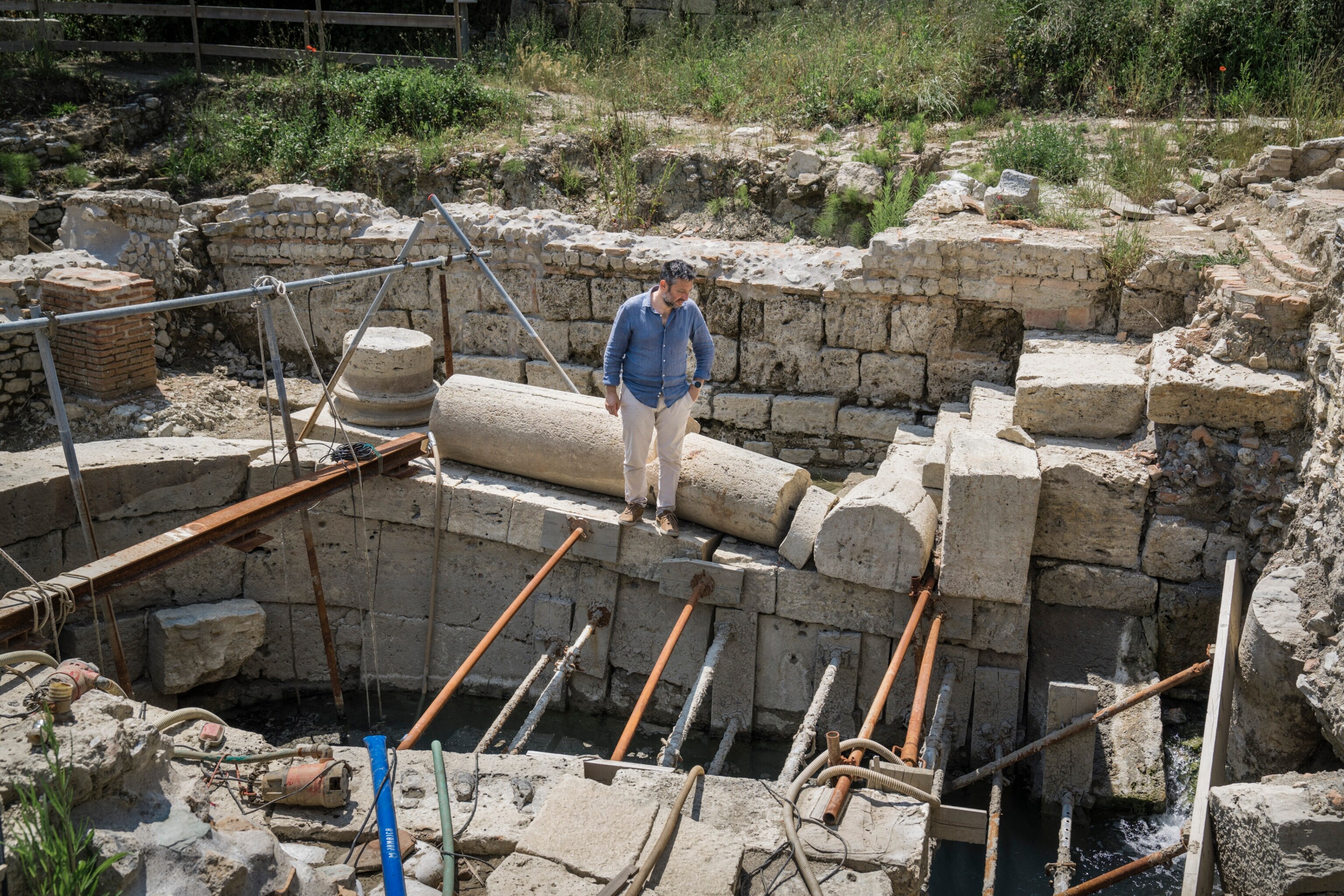
The shallow stone-built tubs they wade into were constructed in the 1600s, when San Casciano dei Bagni was part of the Medici-ruled Grand Duchy of Tuscany. The bottoms of the pools are rough with pebbles and occasionally slippery with algae. But bathers don’t seem to mind, especially since these thermal baths are free, unlike the pricey pools at the nearby luxury resort. And at a steady 42 degrees Celsius (107.6 Fahrenheit), the experience is every bit as soothing, if a bit more rustic.
A few feet from the terme libere, or free baths, a chain link fence covered with a privacy screen and secured with a padlock is all that separates these DIY spa-goers from what may well be the most important archaeological find in the Mediterranean this century. It’s an ancient thermal complex that dates to the third century B.C. and was a place of reverence and healing before it was ceremoniously abandoned in the fifth century A.D. Today, the evidence emerging from the site shows that for hundreds of years, and through a period of tremendous social upheaval and near-constant warfare, Etruscans and Romans came together here to worship, leave offerings, and seek cures.
(Feeling frazzled? These soothing hot springs let you unwind.)
Healing waters
Among the stunning finds pulled from the thermal mud are 24 bronzes dating from the second century B.C. to the first century A.D. Many of the bronzes are of body parts—feet, hands, ears, even internal organs, including a uterus and viscera—or are small statues of infants, children, older adults, and deities, and were given as offerings to the healing gods worshipped at the site. Whether they were left as supplications for a cure or in gratitude for the same isn’t always clear, though some are clearly inscribed as ex voto, or an offering made in fulfillment of a vow.
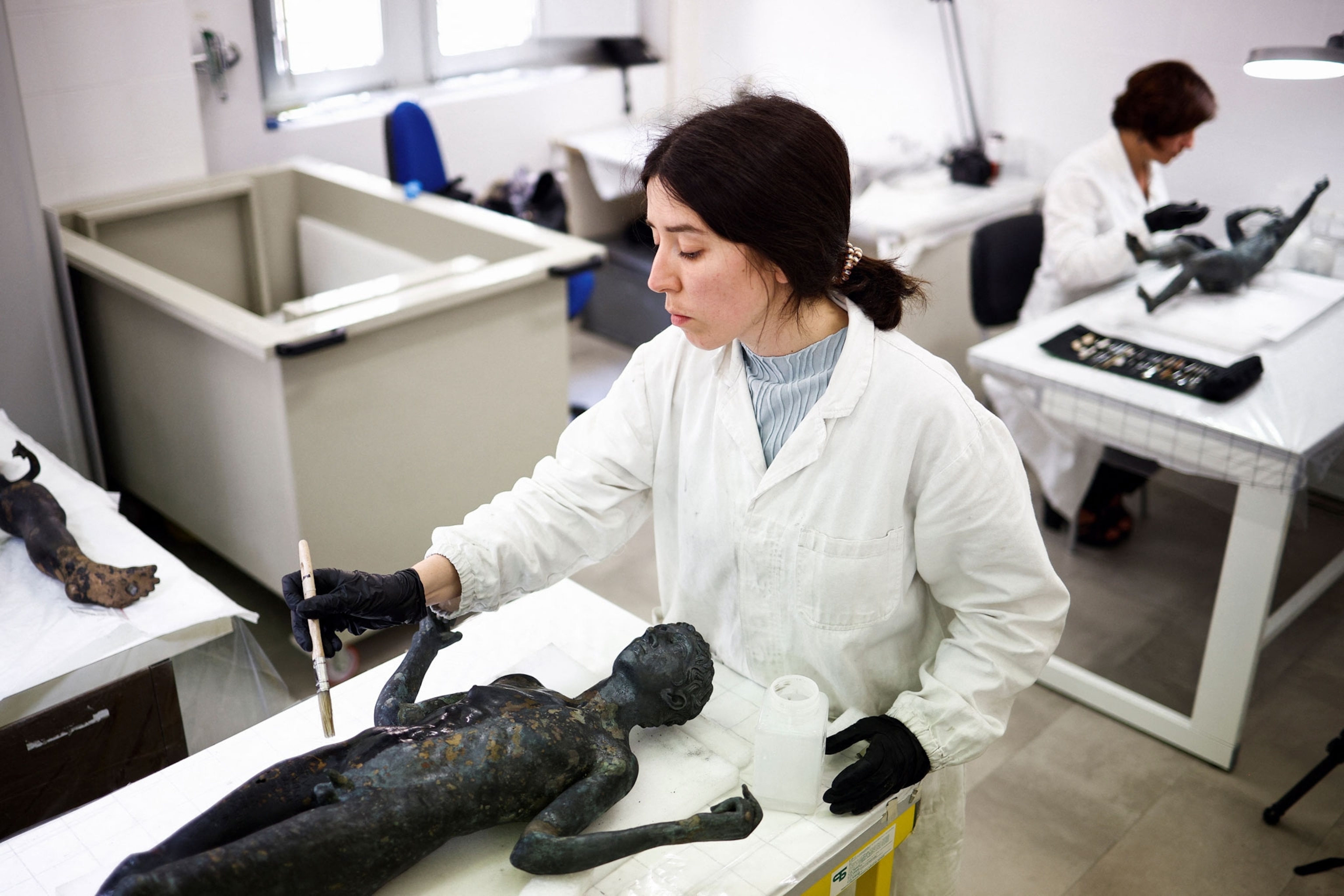
This summer, Jacopo Tabolli, scientific director of the dig, and his team of archaeologists and students carried on their efforts, uncovering more of the ancient thermal area and retrieving more artifacts from the bottom of the pools, including a 6 1/2-foot-tall statue of Apollo and a travertine altar inscribed in Latin and Etruscan—more proof of the multicultural nature of the site.
“Excavating an Etruscan and Roman intact sanctuary, just a few meters from the Renaissance open-air pools where people are still bathing, is exceptional,” says Tabolli. “It’s a living demonstration of the resilience within these thermal-mineral waters. This sacred landscape, despite transformations in rites, cults, and practices, has always remained linked to its waters.”
(This Italian noble’s embalming jar reveals traces of 17th-century medicine.)
The continuity of water and its role as a physical and symbolic bringer of life is felt beyond the excavation site. “We’re a town that lives on tourism,” says Agnese Carletti, mayor of San Casciano dei Bagni, “and water has always been the constant.” A museum that will house the stunning artifacts from the archaeological dig is set to open sometime in 2024.
“The most beautiful thing,” Carletti says, “is that people still go down to the baths for the same reasons they went 2,300 years ago. The water remains absolute.”
What to know
Hotels: Fonteverde Spa is a 5-star thermal hotel with several pools and saunas and a full-service spa. Hotel Sette Querce is located at the entrance to the old town, while Aurora Agriturismo is a country house just steps from the free baths.
Bathing: To find the free baths, walk or drive down Via della Fontanaccia, stopping at the Parcheggio Terme parking lot if you’re driving. There are two bathing areas here, the smaller Bagno Bossolo and, further down the path, the Bagno Grande and the archaeological site. From the town center, a footpath also connects to the baths. At Fonteverde, day passes are available for spa pools and saunas.
Archaeology: Tours of the archaeological dig are currently offered on Saturdays and can be booked through the San Casciano dei Bagni tourism office. Until the larger museum opens in 2024, a small exhibit of items from the dig is on display at the town offices.




